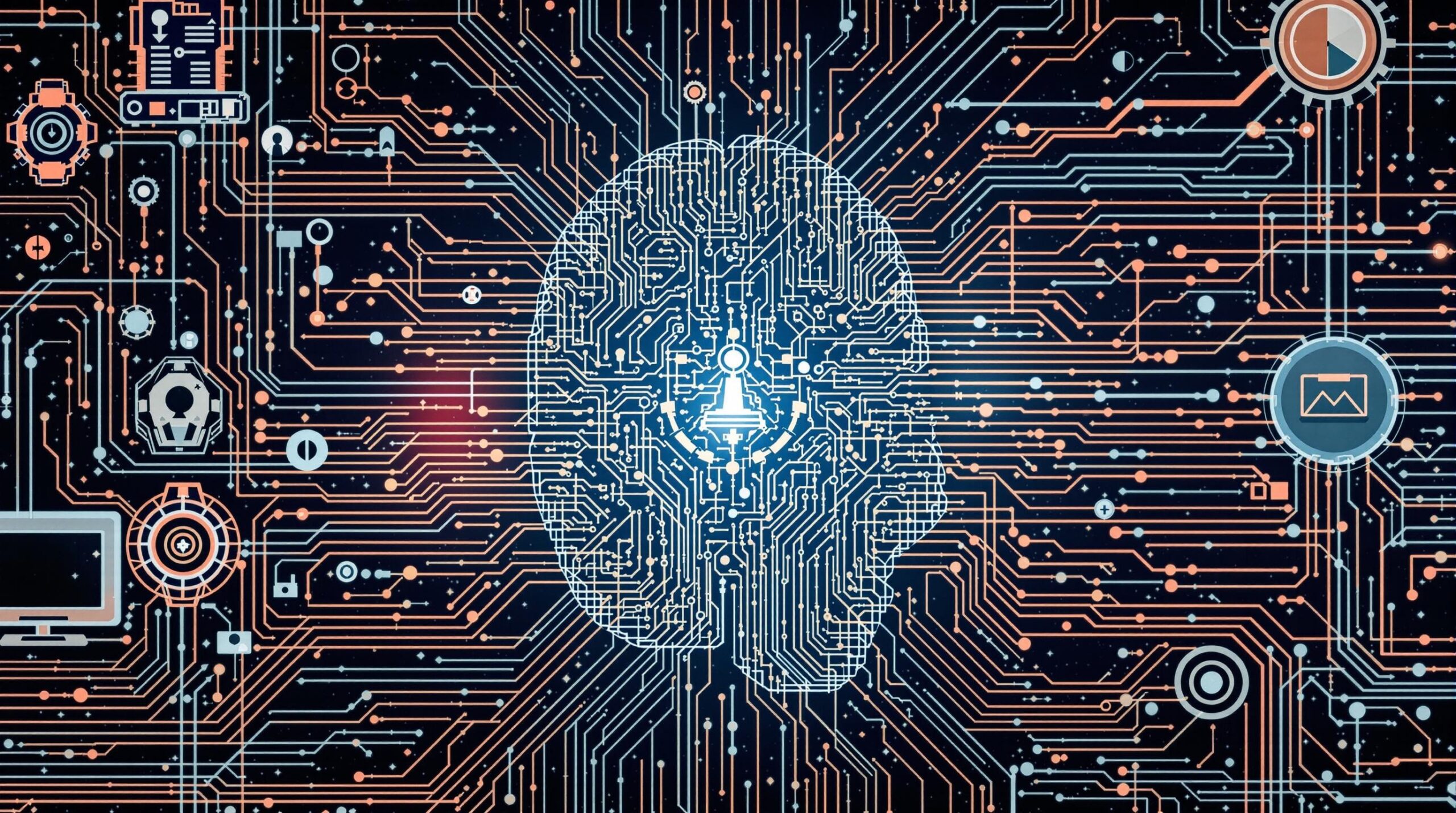Artificial Intelligence is rapidly redefining the global economic landscape as a transformative general-purpose technology that’s comparable to historical innovations like electricity and the internet. Similar to how these previous technologies revolutionized society, AI is poised to reshape virtually every industry through its ability to enhance productivity, optimize decision-making, and completely reinvent traditional workflows.
Key Takeaways
- AI qualifies as a general purpose technology due to its pervasiveness across sectors, continuous improvement capabilities, and ability to spark complementary innovations
- Economic projections suggest AI could contribute up to $19.9 trillion to global GDP by 2030 through productivity gains and innovation
- AI has the potential to automate 25% of labor tasks in advanced economies while creating new job categories
- Countries show significant adoption disparities with India and China leading at 60% compared to the US at 25%
- Successful AI integration requires balancing technological advancement with ethical governance and workforce transition planning
Defining AI as a 21st Century Transformative Technology
Artificial intelligence as a general purpose technology (GPT) represents a fundamental shift in how we approach economic and technological development. Unlike specialized technologies with limited applications, AI exhibits three critical characteristics that define general purpose technologies: pervasiveness across sectors, continuous improvement through iteration, and the remarkable ability to spark complementary innovations throughout the economy.
Historical comparisons help contextualize AI’s potential impact. While the steam engine boosted productivity by 0.3% annually during its adoption phase, AI is projected to elevate US productivity growth by 1.5 percentage points annually following widespread adoption. This acceleration is evident in AI systems like GPT-4, which outperformed 90% of human test-takers on the US bar exam—a dramatic improvement from GPT-3.5’s mere 10% pass rate just a year earlier.

Economic Transformation and Productivity Revolution
The economic impact of artificial intelligence will likely dwarf previous technological shifts. Goldman Sachs estimates AI could increase global GDP by 7% ($7 trillion) by 2033, while Bank of America projects even higher figures of up to $15.7 trillion. These aren’t just abstract numbers—they represent tangible returns on investment. For every dollar invested in AI solutions, the global economy stands to gain $4.60 in economic returns by 2030.
AI’s productivity boost comes through multiple channels. By automating routine tasks, enhancing decision-making, and optimizing complex systems, AI could elevate global labor productivity growth by 1.4 percentage points annually. This growth is supported by rapidly falling implementation costs—training expenses for AI image classification systems dropped 64% over five years, while robotic arm prices decreased by 46%, making automation more accessible across industries.
The scale of this transformation becomes clear when considering specific sectors. In healthcare alone, AI-powered predictive analytics may reduce annual US healthcare spending by $360 billion through better resource allocation and preventive care. This represents just one example of how AI is transforming numerous sectors across the economy.
AI’s Revolution Across Key Industries
Healthcare stands at the forefront of AI adoption, with algorithms now analyzing medical images with over 95% accuracy in detecting conditions like cancer and cardiovascular disease. Beyond diagnostics, AI is transforming drug development by using generative models to identify promising compounds and reduce clinical trial timelines from years to months.
The financial sector has embraced AI for both customer-facing and back-end operations. AI-powered chatbots and virtual assistants are projected to generate $142 billion in consumer spending by 2024. Meanwhile, machine learning models have cut false positives in fraud detection by 30-50%, saving institutions billions while improving customer experience.
Manufacturing has seen equally impressive gains from AI implementation. Companies adopting AI solutions report 12% higher operational efficiency and 5% cost reduction on average. The technology is particularly valuable in:
- Quality control through computer vision systems
- Predictive maintenance to reduce downtime
- Supply chain optimization and inventory management
- Accelerated material discovery for energy and transportation sectors
Global Adoption Patterns and Implementation Challenges
AI adoption varies dramatically across regions, industries, and organization sizes. Contrary to popular perception, the highest adoption rates aren’t in Silicon Valley—India and China lead global AI implementation at approximately 60%, significantly outpacing the US (25%) and UK (26%).
Industry adoption shows similar disparities. Information services leads with 7% penetration, followed by healthcare at 6%. Meanwhile, construction (0.5%) and retail (2.5%) lag significantly despite clear potential benefits. This gap highlights the uneven distribution of AI’s advantages across the economy.
Organization size remains the most significant predictor of AI adoption. Large enterprises with over 10,000 employees implement AI at rates approaching 60%, while small retail firms hover around 4%. This disparity reflects several implementation barriers:
- Limited access to technical talent
- Data infrastructure challenges
- High initial investment costs
- Uncertainty about return on investment
Private investment in AI continues to accelerate despite these challenges, doubling to $94 billion in 2021 alone. This surge reflects growing recognition of AI’s potential to deliver transformative economic benefits across virtually every sector.
The Technological Evolution Driving AI’s Expansion
The rapid advancement of AI capabilities stems from several breakthrough technologies converging simultaneously. Multimodal learning represents one of the most significant developments, enabling systems like GPT-4 to process text, images, and audio simultaneously. This integration allows for applications ranging from real-time translation to industrial defect detection with unprecedented accuracy.
Zero-shot learning capabilities have dramatically expanded AI’s practical applications. Modern systems can perform complex tasks they were never explicitly trained on—from coding to legal analysis—by leveraging contextual reasoning and pattern recognition. This flexibility dramatically accelerates AI’s ability to adapt to new domains without extensive retraining.
Ethical AI frameworks are evolving alongside these technical capabilities, with 93% of firms prioritizing governance by 2025. These frameworks address critical concerns around bias mitigation, privacy protection, and transparency in algorithmic decision-making. Tools like PatSnap’s Eureka AI demonstrate the practical benefits of these approaches, accelerating patent analysis by 40% while maintaining accuracy and ethical standards.
Looking ahead, GPT-5 (anticipated by 2025) aims to reduce factual errors by 50% compared to GPT-4, further enhancing AI’s reliability for critical applications. These advances highlight the self-reinforcing nature of AI as a general purpose technology—improvements in one domain rapidly propagate across the entire technological ecosystem.
Workforce Implications and Societal Impact
The workforce implications of AI adoption present perhaps the most significant societal challenge. Approximately 25% of jobs in advanced economies face substantial automation risks, necessitating comprehensive reskilling programs. The initial productivity gains of around 1.5% may displace 12-15% of workers in vulnerable sectors like accounting, data entry, and customer service.
However, history suggests technological revolutions ultimately create more jobs than they eliminate. New roles are already emerging in AI management, oversight, and integration—positions that didn’t exist a decade ago. The key challenge lies in managing the transition period when job displacement may outpace job creation in certain sectors.
Algorithmic bias presents another significant concern. Without proper oversight, AI hiring tools can reduce candidate diversity by 15-20%, reinforcing existing inequalities. These issues highlight the need for comprehensive regulatory frameworks—currently limited to just 35% of countries globally.
Success in navigating these challenges requires a balanced approach that recognizes both AI’s transformative potential and its inherent risks. Stakeholders must collaborate to create systems that maximize productivity gains while ensuring fair distribution of benefits across society.
Building an Equitable AI Future
Creating an equitable AI future depends on balancing rapid innovation with thoughtful governance and stewardship. Addressing adoption disparities between large corporations and small businesses requires targeted interventions—from technical education programs to shared infrastructure that makes advanced AI capabilities accessible to organizations of all sizes.
Comprehensive regulatory frameworks must evolve beyond their current limited scope. With only 35% of countries having robust AI governance systems, there’s an urgent need for global coordination to establish standards that protect individuals while enabling innovation. These frameworks should address privacy concerns, bias mitigation, and accountability for algorithmic decision-making.
Ensuring AI benefits extend beyond advanced economies represents another critical challenge. As economist Andrew McAfee notes, AI’s rapid diffusion could accelerate growth faster than past general purpose technologies, but only if complemented by policies ensuring equitable access across geographic and demographic boundaries.
Ultimately, the organizations that thrive in this new landscape will be those that view AI not merely as a cost-cutting tool but as a transformative capability that enables entirely new approaches to solving problems. By embracing AI’s potential while thoughtfully addressing its challenges, we can harness this powerful general purpose technology to create unprecedented economic and social value.
Sources
digital-adoption.com – Artificial Intelligence General Purpose Technology
americancentury.com – Exploring AI’s Economic Impact
softcircles.com – What is Artificial Intelligence and Why It Matters in 2024
ventionteams.com – AI Adoption Statistics
mitsloan.mit.edu – Impact of Generative AI as a General Purpose Technology
goldmansachs.com – AI May Start to Boost US GDP in 2027




